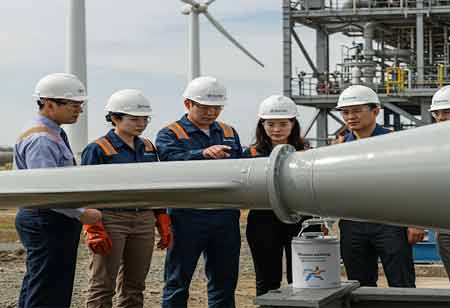Thank you for Subscribing to Construction Business Review Weekly Brief
Specials
- Apartment and Condominium Contractors Canada
- Decking Canada
- Architectural Glass Europe
- MEP APAC
- Construction Saudi Arabia
- German Apartment and Condominium Contractors
- Construction Law APAC
- Outdoor Construction
- Foundation Construction Canada
- MEP Canada
- Kitchen and Bath
- Cold Storage Construction APAC
- Precast Concrete Europe
- Construction Staffing Europe
- Pre-Construction Services
- Flooring System APAC
- Scaffolding Canada
- Swimming Pool Construction Canada
- Construction Management Canada
- Cold Storage Construction Canada
- Flooring Systems Europe
- Residential Construction
- Concrete Canada
- Construction Cladding Europe
- Construction Cladding APAC
- Concretes, Aggregates and Construction Materials APAC
- Concretes, Aggregates and Construction Materials Europe
- Commercial Contractors Europe
- Commercial Contractors APAC
- Dummy
- Construction Insulation, Coating and Waterproofing
- Construction Management APAC
- Landscaping Canada
- Construction Coating Europe
- Construction Tech Startups Europe
- Insulation Services Europe
- Mechanical Contractor Canada
- Mould Remediation and Testing Europe
- Swimming Pool Construction APAC
- Building Sealing Solutions Europe
- Construction Engineering Services
- Mechanical Electrical and Plumbing
- Roofing Systems Europe
- Architectural Glass APAC
- Startups APAC
- Construction Forensic and Owners Representative
- Flooring System
- Waterproofing APAC
- Wall Systems
- Safety and Compliance Europe
- Construction Equipment
- Modular and Prefab Construction
- Architectural Glass
- Construction MENA
- Construction Demolition and Recycling Europe
- Modular Construction Europe
- Construction Interiors
- Steel Building APAC
- HVAC
- Doors and windows
- Modular Construction APAC
- Building Information Modeling APAC
- Sustainable Construction APAC
- Building Restoration and Maintenance
- Commercial Contractors
- Specialty Construction
- Construction Engineering Canada
- Construction Engineering MENA
- Modular Construction Canada
- Construction Demolition Canada
- Roofing and Siding Systems
- Construction Latam
- Construction Staffing
- Roofing Systems APAC
- Construction Consulting
- Steel Building Europe
- Construction Demolition and Recycling APAC
- Safety and Compliance APAC
- Concretes, Aggregates and Construction Materials
- Construction Cladding
Trends and Features of Curtain Walls
From the outside, we experience buildings through their facades–the systems and materials that make up a facade give the building its identity.

By
Construction Business Review | Monday, August 28, 2023
Stay ahead of the industry with exclusive feature stories on the top companies, expert insights and the latest news delivered straight to your inbox. Subscribe today.
Office buildings and commercial spaces utilize interior curtain walls as room dividers for several reasons, including increasing the building's natural light intake and isolating an area while still allowing people to enter the industry is now gaining the interest of construction stakeholders more than ever, mainly because of the pandemic’s effect on how we inhabit buildings.
Fremont, CA: From the outside, we experience buildings through their facades–the systems and materials that make up a facade give the building its identity. To create stronger identities for contemporary buildings, curtain wall systems have been enhanced, updated, and altered, inspired by engineering, technology, and even art! Read on to learn about the latest trends in curtain wall systems.
What Are The Main Types Of Curtain Walls?
In factories, curtain systems are manufactured and assembled before they are installed in buildings.
Stick Curtain Wall System
A stick curtain wall system consists of components that are assembled piece by piece on the building's structure. This method is applicable for low-rise and small-scale buildings because they offer more manageable and less dangerous access to the assembly process.
Unitized Curtain Wall System
Instead, components of the unitized curtain wall system are preassembled at the factory and shipped as a single unit.
What Are The Components Of A Curtain Wall System?
Transom
In specific systems, transoms anchor horizontally mounted panels to slabs or beams.





